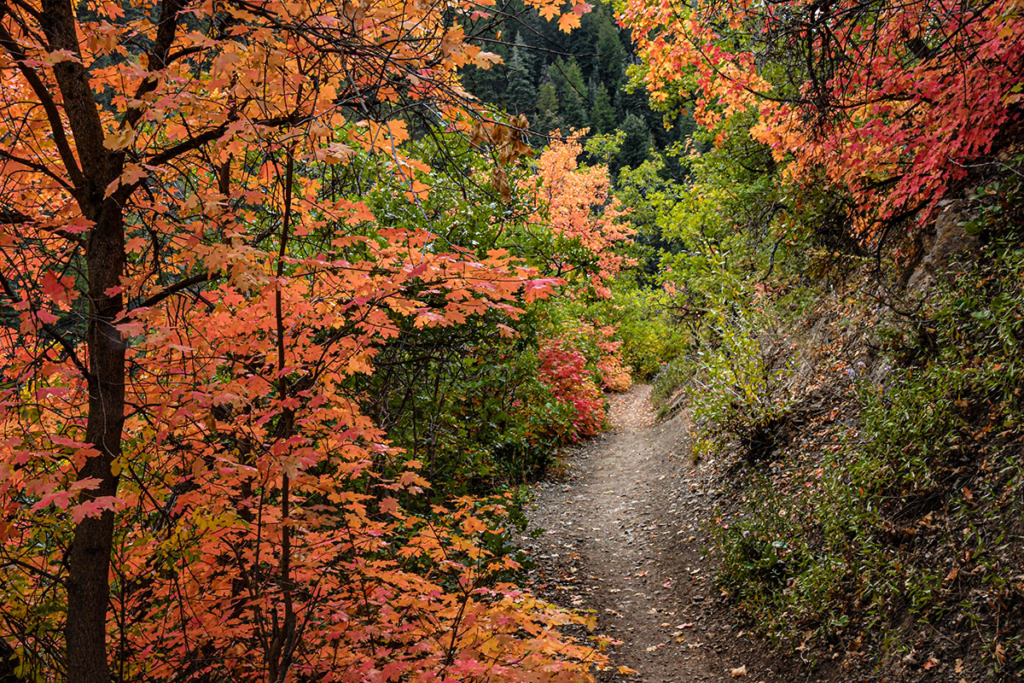
Spring and fall are more than simply transition seasons. While they may often seem way too short, they’re the times when we who live in temperate climates can enjoy the outdoors in comfort. Right now, fall is in full swing in the Northern Hemisphere. Here in Utah, fall colors are at their peak. In the past week, I’ve escaped my computer four times to take a nature break.
According to several studies cited in an article published by Yale University, titled “Ecopsychology: How Immersion in Nature Benefits Your Health,” 120 minutes is the magic number for reaping the benefits of being in nature. These benefits include:
- lower blood pressure
- lower stress hormone levels
- reduced nervous system arousal
- enhanced immune system function
- increased self-esteem
- decreased anxiety
- improved mood
A Nature Break, Even in the City
I feel fortunate to live in a place where there are mountains just minutes away. I can easily spend two hours among the trees, almost any day of the week. The Wasatch Mountains are just 20 minutes away, and the foothills are a mere five minutes from my house. I can easily take a 120-minute break in the morning or afternoon, even on a work day.
But what if you live in a concrete jungle? The good news is that a nature break doesn’t have to take place in designated wilderness. Is there a city park, a field, or some other sort of green space within easy walking or driving distance? If not, simply spending time outdoors, even in the city, can be refreshing.
How to Optimize Your Time Outdoors
- Leave your phone at home, or at least, turn it off and vow not to look at it during your time out.
- Avoid using your time outdoors to go over your to-do list, or to think about some challenging situation in your life. Use the time to take a vacation from your daily life concerns. Be present with your experience. Tune into what you feel—the sun or wind on your skin, the fragrance of the air, the sound and sensation of your feet on the ground (as in walking meditation). Be present with your surroundings, the sights and sounds in your environment (as in hearing meditation).
- Mild autumn temperatures are a perfect environment for practicing yoga outdoors. Find a level spot, preferably in the shade, and lay out your yoga mat. Outdoor yoga practice is the perfect time to teach yourself how to maintain equanimity, even when your environment is not completely calm. Make the sensations around you part of your practice.
Years ago, I met an old-school yoga teacher who said something I’ll never forget. She said, “The Earth is the guru of the body. The sky is the guru of the mind.” Being in nature, present with the earth and sky, can tune us into our own essential nature. No matter where you live, take time to learn from these two gurus of body and mind. Nature holds the key.
